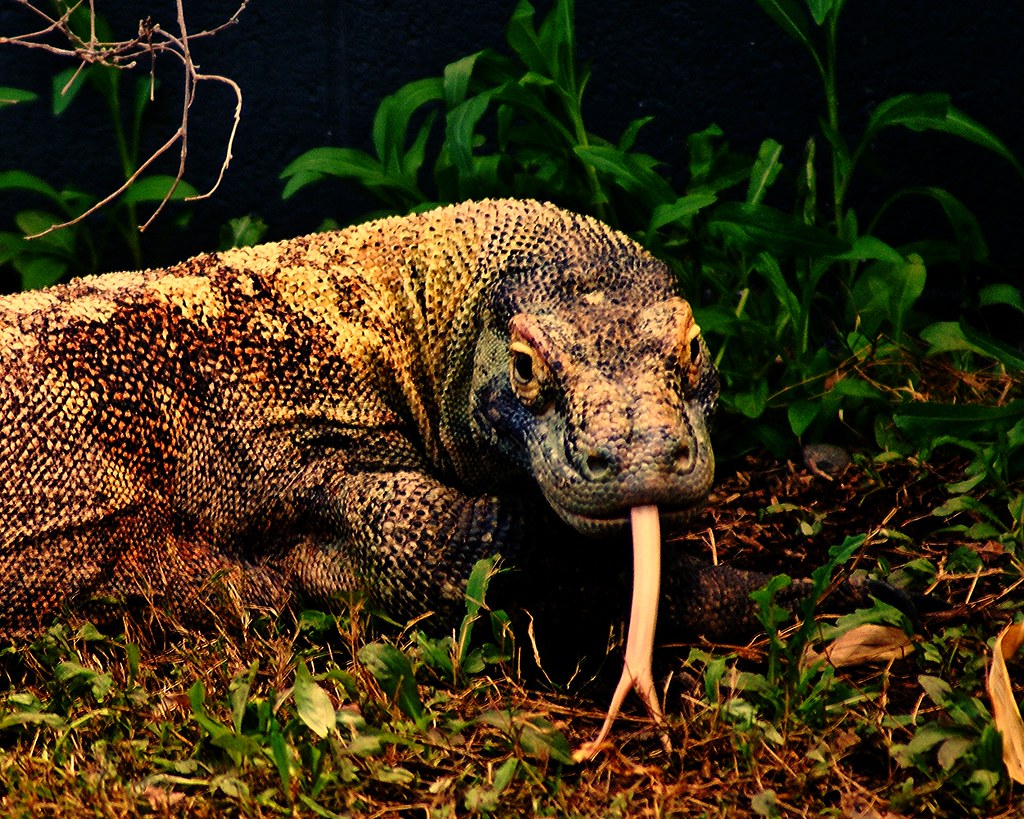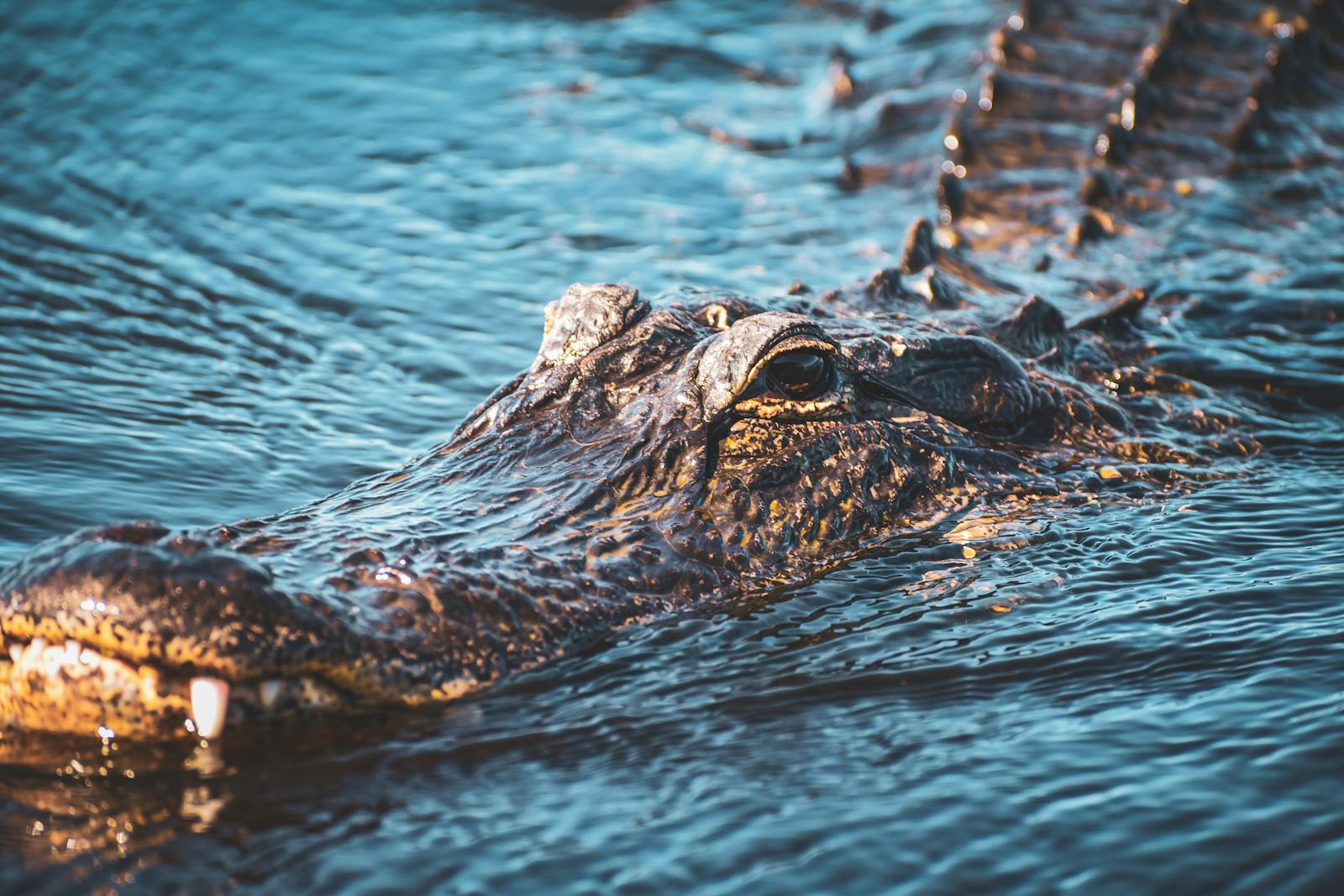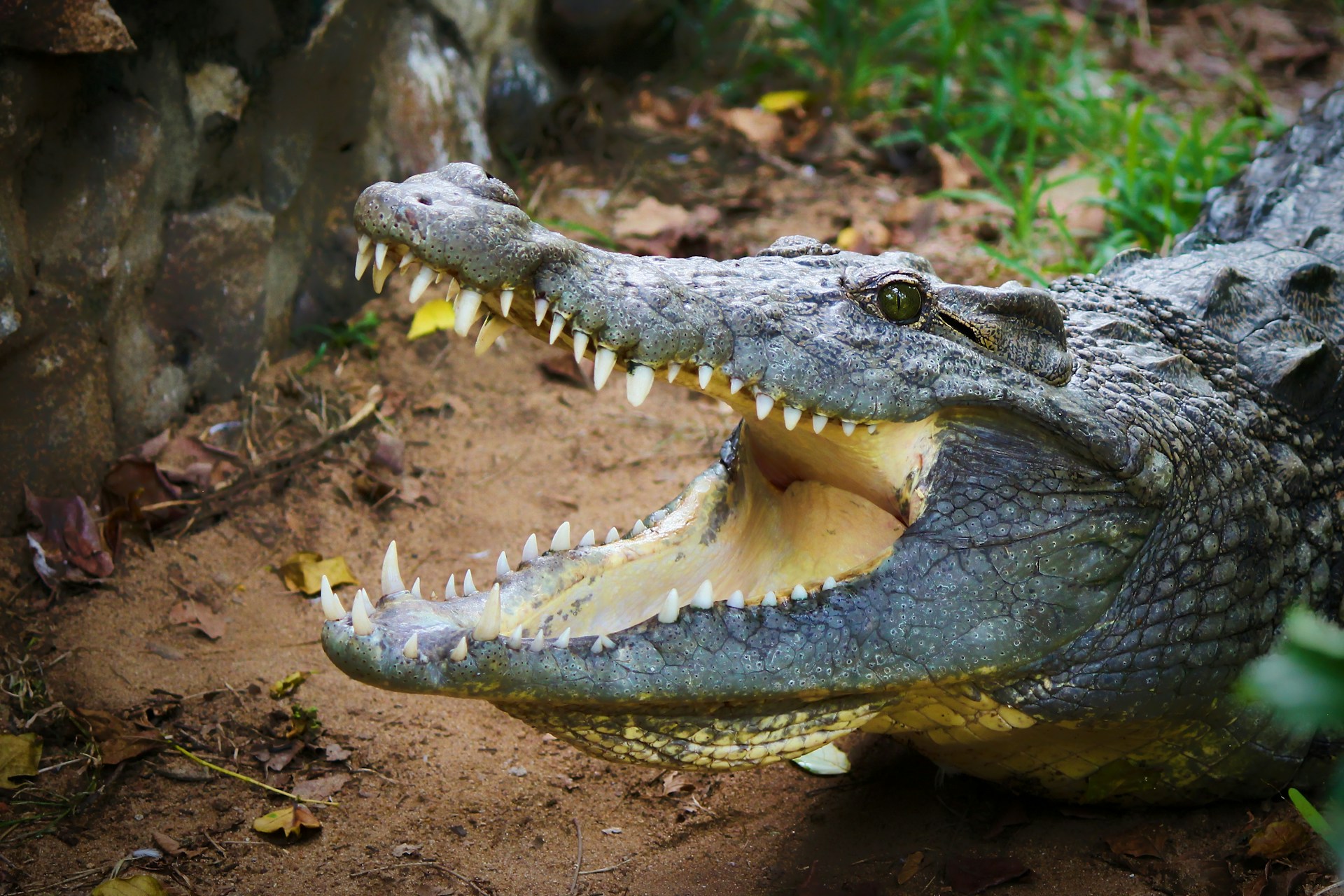The Komodo dragon, Earth’s largest living lizard, has captivated scientists and nature enthusiasts for decades with its formidable hunting abilities. While popular culture often portrays these magnificent reptiles as simply delivering a venomous bite before tracking their dying prey, the reality is far more complex and fascinating. These ancient predators employ a sophisticated combination of physical adaptations, hunting strategies, and biological weapons that make them one of nature’s most effective hunters. From their specialized teeth and powerful jaws to their unique venom delivery system and patient hunting tactics, Komodo dragons represent an evolutionary marvel that has remained largely unchanged for millions of years. Let’s explore the multi-faceted killing methods of these remarkable reptiles that go well beyond the simplistic “bite and wait” narrative often presented in wildlife documentaries.
The Evolutionary Marvel of Komodo Dragons

Komodo dragons (Varanus komodoensis) stand as living relics from a prehistoric era, having evolved their specialized hunting abilities over millions of years. These massive lizards, which can grow up to 10 feet long and weigh more than 300 pounds, are the dominant predators in their Indonesian island habitats. Their evolutionary journey has equipped them with multiple adaptations specifically designed for hunting and killing prey much larger than themselves. Unlike many apex predators that rely primarily on speed or strength, Komodo dragons have developed a more nuanced approach that combines physical power, patience, specialized anatomy, and biochemical weapons. This evolutionary success is evidenced by their position at the top of their food chain and their ability to survive in challenging environments where other large predators would struggle.
The Myth of the Septic Bite
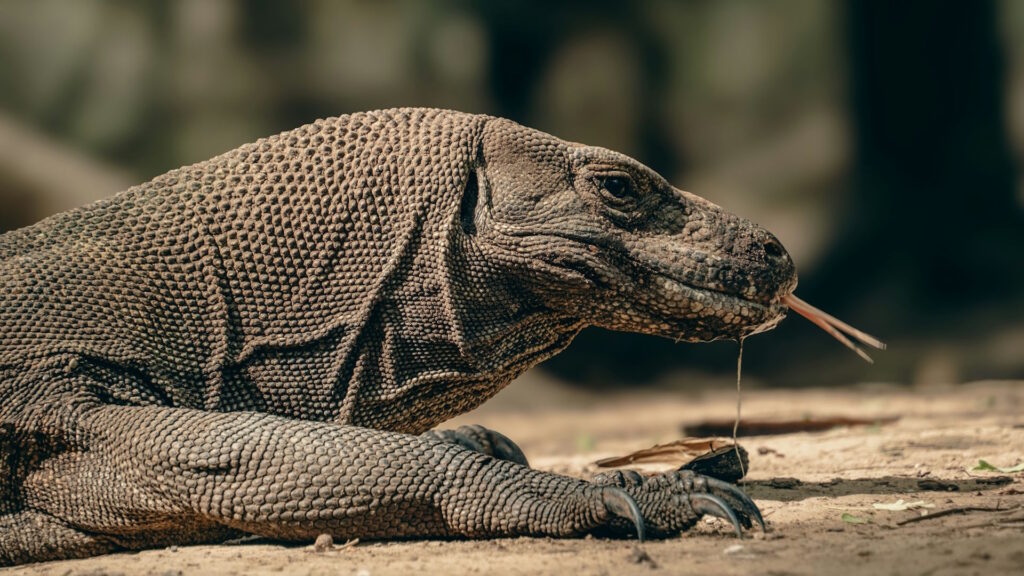
For decades, scientists believed that Komodo dragons killed through a “septic bite,” where bacteria from their mouths infected prey, eventually causing death through blood poisoning. This theory stemmed from observations of the dragons’ seemingly dirty mouths and the slow death of their victims. However, comprehensive research in the early 2000s decisively debunked this long-held belief. While Komodo dragons do harbor numerous bacteria species in their mouths (as do most predators), these bacteria aren’t the primary killing mechanism. Experiments demonstrated that prey animals died too quickly to be succumbing to bacterial infection, and the dragons’ saliva actually contains antibacterial properties that would counteract such infections. This scientific revision highlights how even well-established theories about wildlife can require updating as research technologies advance and new evidence emerges.
The Venom Discovery

In 2009, researchers led by Dr. Bryan Fry made a groundbreaking discovery that revolutionized our understanding of Komodo dragons. Through detailed MRI studies and tissue analysis, they identified complex venom glands in the lower jaws of these reptiles, overturning the previous septic bite theory. These specialized glands produce a potent cocktail of toxins that prevent blood clotting, lower blood pressure, induce muscle paralysis, and send prey into shock. Unlike snake venom that’s delivered through hollow fangs, Komodo venom seeps into wounds through grooves between the lizard’s serrated teeth when they bite. This discovery placed Komodo dragons among the few venomous reptiles and explained why their prey often becomes rapidly incapacitated after being bitten. The finding also established an evolutionary link between monitors and other venomous reptiles, suggesting that venom systems might be more widespread among lizards than previously thought.
Teeth and Jaws: Designed for Maximum Damage
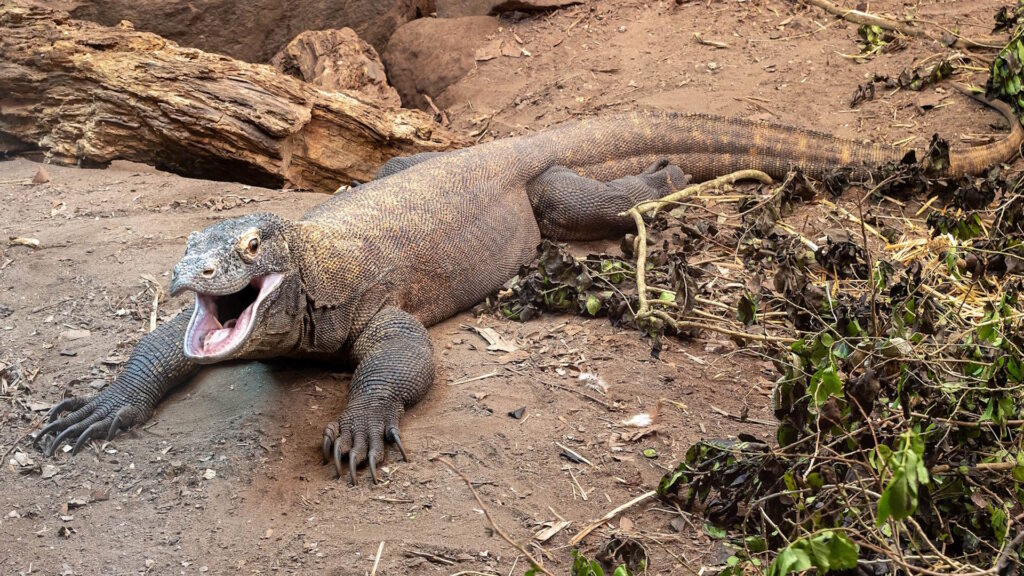
Komodo dragons possess a formidable dental arsenal that plays a crucial role in their hunting success. Their mouths contain approximately 60 serrated, recurved teeth that are regularly replaced throughout their lifetime, ensuring they always have sharp cutting implements. These teeth are uniquely designed with serrations facing backward, similar to steak knives, which allows them to slice through flesh with remarkable efficiency when they pull their heads backward during a bite. Their powerful jaws can exert tremendous pressure, estimated at around 39 newtons, which is sufficient to crunch through bone and tear large chunks from prey. The combination of these dental adaptations with their jaw strength creates a devastating weapon that inflicts massive tissue damage during attacks, creating extensive wounds that facilitate both blood loss and the introduction of venom into the victim’s system.
The Ambush Strategy
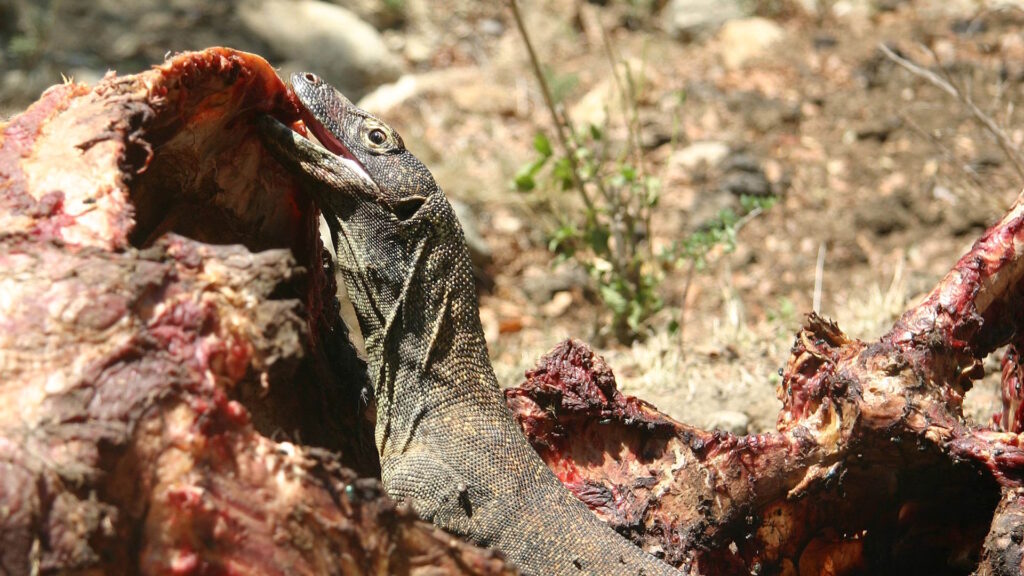
Despite their imposing size, Komodo dragons excel as ambush predators, displaying remarkable patience and stealth when hunting. They may remain motionless for hours beside game trails or water sources, their mottled brown coloration providing perfect camouflage among the dry brush of their native islands. When prey approaches within striking distance, the dragon launches a surprisingly swift attack, often targeting the legs or underbelly of animals like deer, pigs, or water buffalo. The initial ambush is crucial because Komodo dragons lack the sustained speed necessary for long chases, typically being able to sprint only briefly at up to 13 miles per hour. After the initial strike, they may release smaller prey that tries to flee, knowing their venom will soon take effect and the weakened animal can be tracked later. For larger animals like water buffalo, the dragons may maintain their grip and attempt to bring down the prey immediately, especially if hunting in groups.
The Chemical Arsenal

The venom produced by Komodo dragons contains a sophisticated blend of toxins that work synergistically to incapacitate prey through multiple mechanisms. Scientists have identified over 50 different toxic compounds in their venom, including proteins that prevent blood coagulation (anticoagulants), components that dramatically lower blood pressure (hypotensives), and toxins that induce paralysis. This chemical cocktail creates a cascade of physiological effects in victims, leading to massive blood loss, shock, and eventually cardiovascular collapse. The anticoagulants are particularly effective, causing wounds to bleed profusely and preventing natural clotting that might otherwise save the animal. Interestingly, the composition of Komodo venom shares similarities with that of the Gila monster and some snakes, suggesting a shared evolutionary origin of these venom delivery systems despite the animals’ different appearances and ecological niches.
The Patient Pursuit

After delivering their venomous bite, Komodo dragons often engage in one of nature’s most methodical hunting strategies: the patient pursuit. They possess an extraordinary ability to track wounded prey using their keen sense of smell, which can detect carrion from up to 5.9 miles away. The dragon will follow the bitten animal, sometimes for days, as the venom gradually weakens it through blood loss and shock. This tracking behavior demonstrates remarkable cognitive abilities, as the dragons seem to understand the delayed effects of their attack and adjust their hunting strategy accordingly. They may periodically test the prey’s strength with brief approaches, retreating if the animal still displays vigor, only to return later when resistance has diminished. This patient pursuit strategy conserves energy while maximizing hunting success, allowing Komodo dragons to take down prey many times their own weight with minimal risk of injury to themselves.
Group Hunting Behaviors
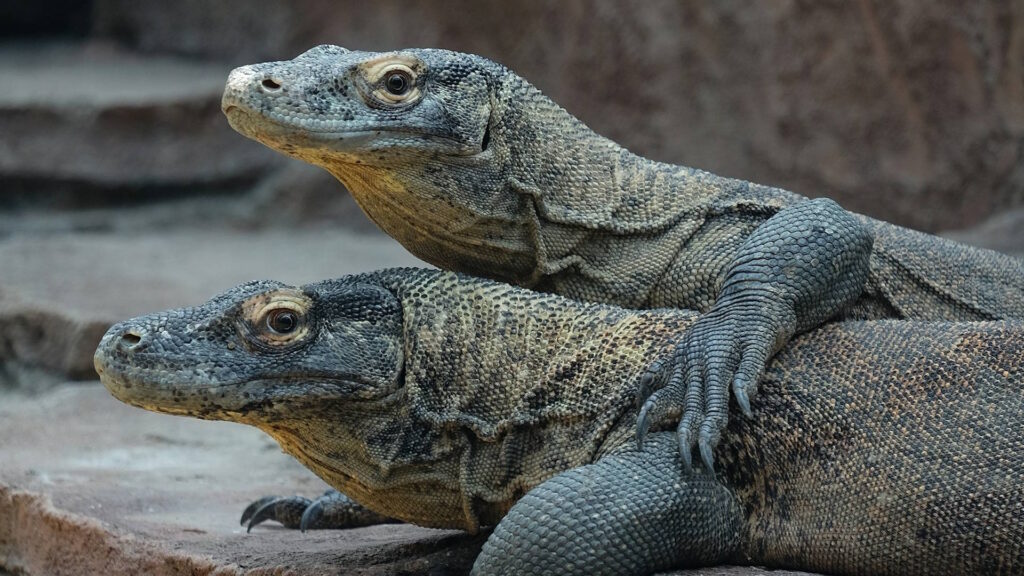
While often portrayed as solitary hunters, Komodo dragons frequently engage in sophisticated group hunting behaviors that significantly increase their predatory success. When targeting large prey like water buffalo, multiple dragons may coordinate their efforts, with several individuals attacking simultaneously from different angles. This cooperative strategy overwhelms even powerful prey animals, preventing effective defense against multiple attackers. Researchers have observed complex social hierarchies during group feedings, with dominant dragons claiming priority access to carcasses while subordinates wait their turn. Interestingly, this social structure appears to be flexible, with dragons capable of both solitary and group hunting depending on prey size and availability. This behavioral adaptability represents an advanced cognitive capacity not commonly associated with reptiles and demonstrates why these ancient predators have remained successful for millions of years despite changing environments.
Powerful Limbs and Claws

Beyond their venomous bite, Komodo dragons employ their powerful limbs and sharp claws as essential weapons in the predatory arsenal. Their legs possess remarkable strength, allowing the lizards to wrestle with large prey and maintain their position during struggles with animals many times their weight. Each foot is equipped with long, curved claws that can reach lengths of over an inch, serving multiple purposes during hunting and feeding. These claws are used to grasp and hold struggling prey, inflict additional wounds beyond the initial bite, and efficiently tear open carcasses during feeding. When attacking larger prey like water buffalo, dragons often use their claws to disembowel victims, targeting the soft underbelly to access vital organs and accelerate blood loss. This physical weaponry complements their venomous bite, making Komodo dragons exceptionally versatile predators capable of adapting their attack methods to different prey types and situations.
The Death Roll Technique
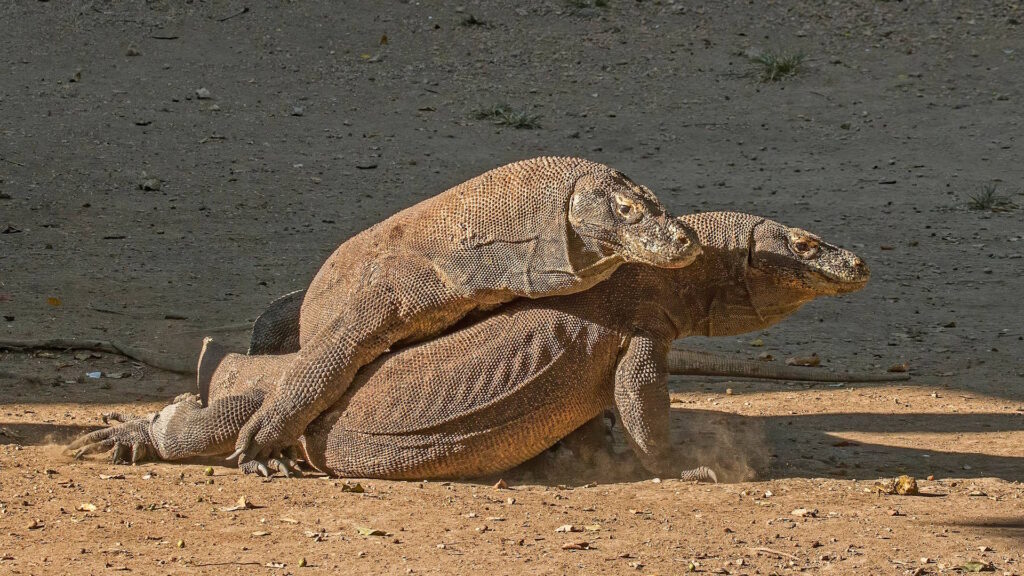
Komodo dragons employ a devastating technique reminiscent of crocodilians called the death roll, which they use to tear massive chunks of flesh from their prey. After securing a firm bite, the dragon violently twists its entire body while keeping its jaws clamped, using the rotational force to rip away tissue rather than relying solely on jaw strength. This efficient feeding method allows them to quickly remove large portions of meat, which they swallow whole without chewing. The death roll is particularly effective when multiple dragons feed on a single carcass, as each can secure a section and employ this technique simultaneously. Scientists believe this behavior evolved as an adaptation for quickly consuming large prey before competitors arrive, as Komodo dragons can detect feeding activity from great distances. The efficiency of this feeding technique enables dragons to consume up to 80% of their body weight in a single meal, sustaining them through long periods between successful hunts.
Thermal Sensing Abilities
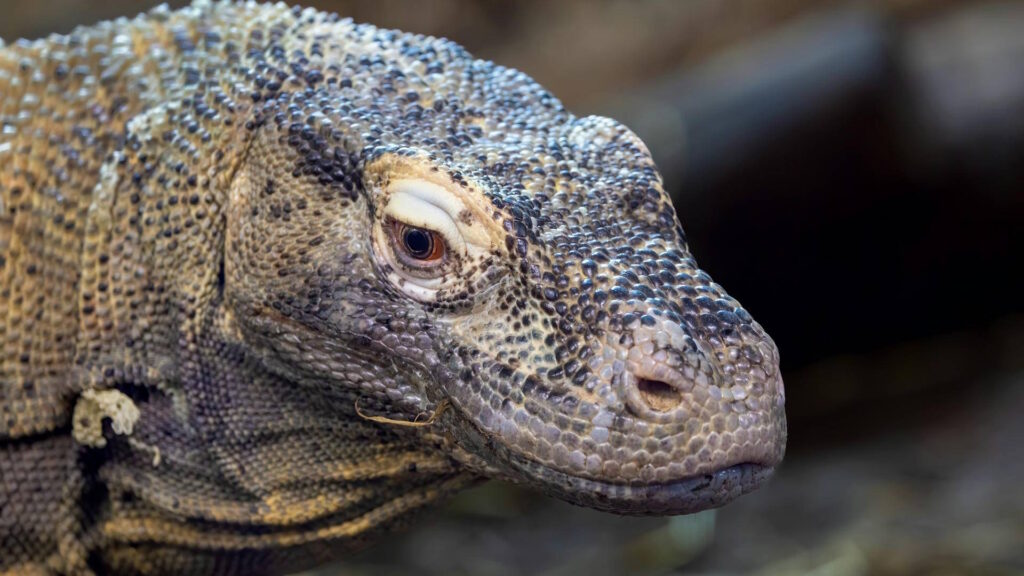
Komodo dragons possess specialized sensory equipment that aids their hunting prowess, including remarkable thermal detection capabilities. Located on either side of their snouts are unique sensory organs called vomeronasal organs that can detect minute temperature differences, allowing dragons to identify warm-blooded prey even in complete darkness. This adaptation enables them to locate animals hiding in burrows or dense vegetation where visual hunting would be ineffective. The thermal sensing ability works in conjunction with their extraordinary sense of smell, creating a multi-sensory tracking system that makes evasion nearly impossible for wounded prey. These specialized senses explain the dragons’ almost supernatural ability to locate carrion or weakened animals across significant distances and challenging terrain. When combined with their patient hunting strategy, these sensory adaptations create a predator exceptionally well-equipped to locate prey that believes itself safely hidden, contributing significantly to the Komodo dragon’s fearsome reputation.
Powerful Digestive System
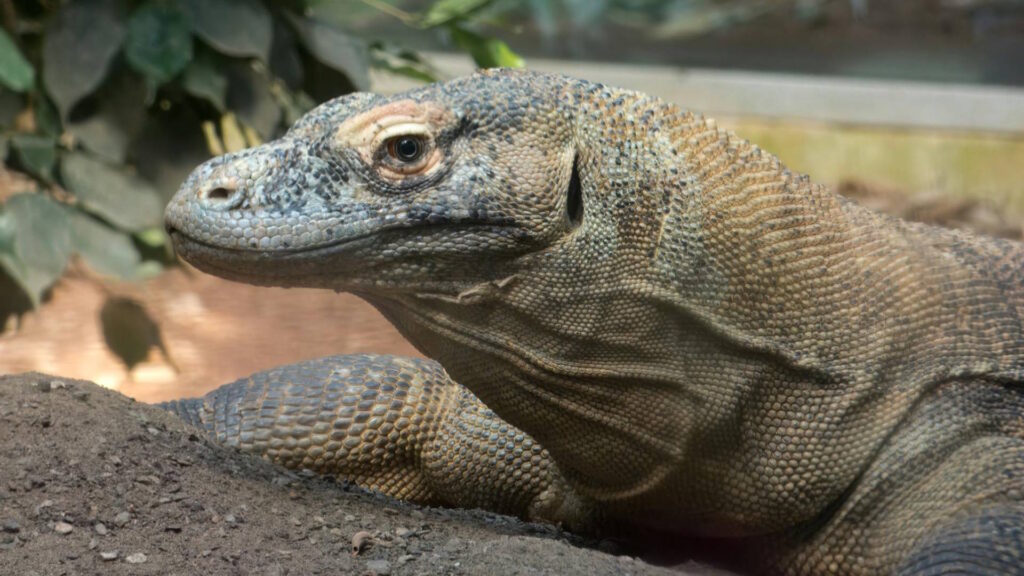
The Komodo dragon’s digestive system represents another specialized adaptation that complements its hunting strategies. After consuming large quantities of meat, bones, and even horns or hooves, their stomachs produce extremely potent acids and enzymes that can dissolve nearly every part of their prey. This remarkably efficient digestion allows them to extract maximum nutrition from each kill, with studies showing they can digest up to 95% of what they consume. Their metabolic efficiency is further enhanced by their ability to dramatically slow their heart rate and enter a semi-dormant state after large meals, directing energy toward digestion rather than movement or hunting. This digestive prowess means dragons can survive on surprisingly infrequent meals, with an adult potentially needing to feed only about 12 times per year. The comprehensive utilization of prey resources represents an important evolutionary adaptation for survival in their relatively harsh island environments where large prey may be sporadically available.
Adaptations for Carrion Feeding

While renowned as active predators, Komodo dragons are equally adapted for scavenging, possessing specializations that allow them to safely consume putrefying carcasses that would sicken or kill most other predators. Their immune systems demonstrate extraordinary resistance to the bacterial toxins present in rotting meat, enabling dragons to feed on carrion regardless of its decomposition stage. Their saliva contains powerful antibacterial compounds that help neutralize potentially harmful pathogens ingested during feeding. Additionally, Komodo dragons possess the unusual ability to rapidly clean their mouths of bacteria-laden flesh by secreting copious amounts of blood-tinged fluid after meals, effectively flushing out their oral cavities. This adaptation for carrion feeding represents an important survival strategy that allows dragons to utilize food sources unavailable to other large predators in their ecosystem. Their scavenging abilities also help explain their evolutionary success, as they can opportunistically exploit both active hunting and carrion feeding depending on environmental conditions and prey availability.
Conservation Implications

Understanding the sophisticated hunting mechanisms of Komodo dragons has profound implications for conservation efforts aimed at protecting these endangered reptiles. With fewer than 3,000 individuals remaining in the wild, Komodo dragons face significant threats from habitat loss, poaching, and climate change impacts on their island ecosystems. Their complex predatory adaptations required millions of years of evolution and represent irreplaceable natural heritage that would be permanently lost with their extinction. Conservation scientists are using knowledge of their hunting behaviors to design protected areas that include sufficient prey populations and diverse habitat types necessary for successful hunting. The dragons’ ability to utilize both predation and scavenging demonstrates their ecological importance as both apex predators and environmental cleaners. Their venom also holds potential medical applications, with researchers investigating its unique compounds for possible use in developing anticoagulants and blood pressure medications, creating additional incentives for protecting these remarkable animals beyond their intrinsic value.
Conclsuion
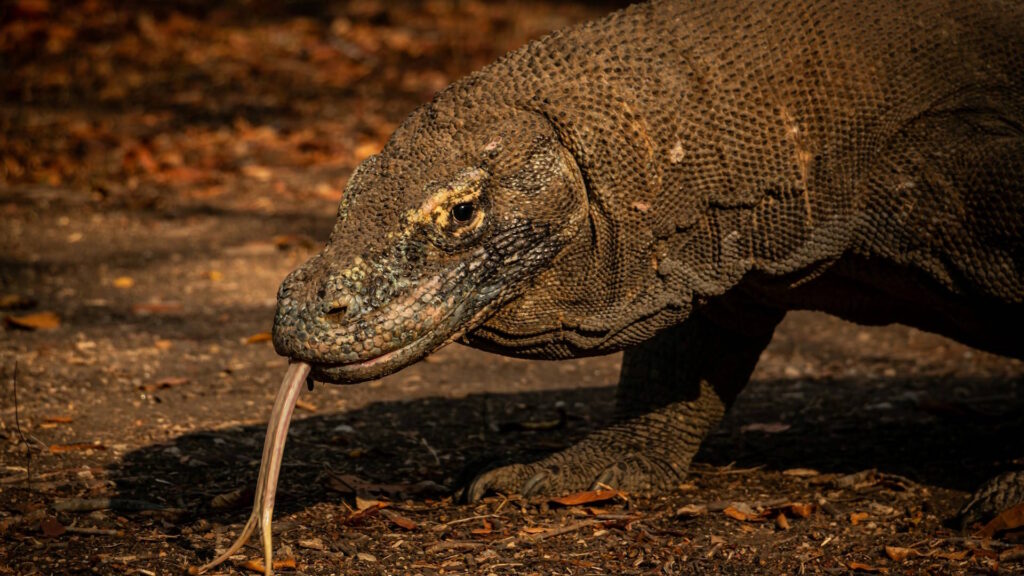
The Komodo dragon’s reputation as a fearsome predator is well-deserved, but as we’ve discovered, their hunting methods involve far more sophistication than just a simple venomous bite. These ancient reptiles employ a remarkable arsenal of weapons and strategies, from their specialized teeth and powerful jaws to their complex venom and patient hunting tactics. Their success as apex predators stems from this multi-faceted approach that has been refined over millions of years of evolution. As one of nature’s most perfectly designed predators, Komodo dragons remind us that effective hunting often involves more than raw strength or speed—it requires specialized adaptations working in concert. By understanding these magnificent creatures more fully, we not only appreciate their evolutionary ingenuity but also recognize the importance of preserving them and their unique island ecosystems for future generations. The Komodo dragon stands as a powerful reminder of nature’s complexity and the remarkable adaptations that allow species to thrive in their ecological niches.


